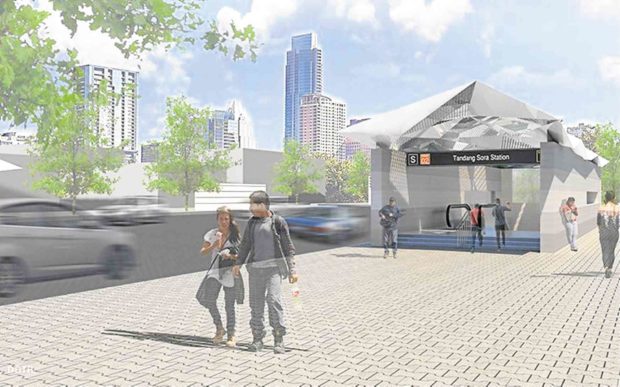
SUBWAY STOP An artist’s sketch of Tandang Sora station, one of the 15 stops on the country’s soon-to-be first underground train system. —DOTr photo
While the exact locations of the 15 stations that will make up the country’s first subway system have yet to be announced, the Department of Transportation (DOTr) has confirmed that at least six will pass through government property in a bid to increase the value of the surrounding land.
The move, according to Assistant Transport Secretary for Communications Goddes Hope Libiran, is part of the DOTr’s new strategy of placing railway stations for all future railway systems along state-owned land.
The aim, she said, was to generate revenues to pay off construction loans or fund other projects.
It was in direct contrast to the previous practice of placing railway stations near commercial areas like malls.
According to a list provided to the Inquirer, the six stations on the 36-km subway system will be built on the following government property:
• North Avenue Station (inside Veterans’ Memorial Medical Center golf course)
• Quezon Avenue Station (along Edsa in front of Manila Seedlings Bank)
• Katipunan Station (inside Camp Aguinaldo)
• Lawton East Station (inside National Mapping and Resource Information Authority property)
• Lawton West Station (inside Bases Conversion and Development Authority property)
• Naia Station (Terminal 3)
The multibillion system, which broke ground last Feb. 27 and is expected to operate in 2025, is just one of several railway networks being built by the DOTr under the Duterte administration’s “Build, Build, Build” program.
Last year, lawmakers questioned the DOTr for diverting the subway alignment away from Edsa and other heavily populated areas, fearing that the department had aligned the system through areas not frequented by commuters.
However, the DOTr said that the stations identified for the subway were not only teeming with commuters, these were also connected to other transport terminals to ease mobility.